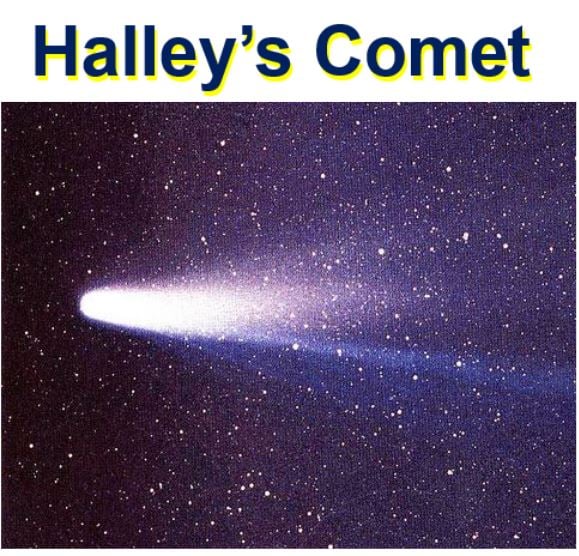Tonight and tomorrow are the best times to see the shooting stars in the sky as Earth passes through a cloud of debris left by the famous Comet 1/P Halley (Halley’s Comet) – astronomers say the debris brings with it an ‘interesting and reliable meteor shower’.
The meteor shower associated with Halley’s Comet is called the Eta Aquariids, which occur every year as our planet passes through an old stream of dusty and icy debris. This is occurring at the moment. We will pass through a second stream of Halley’s Comet later in the year in October (Orionids).
The Eta Aquariids got its name from the 4th magnitude star Eta Aquarii, located in the constellation Aquarius. The star is far away – 168 light years from here – and has no physical link to the meteor shower.
 The Eta Aquariid Meteor Shower consists of pieces of debris from Halley’s Comet. According to NASA: “Those in the southern hemisphere will again see more Eta Aquarids than those in the northern hemisphere, but pretty much everywhere in the world except the Arctic Circle has a chance to view the shower.” (Image: nasa.gov)
The Eta Aquariid Meteor Shower consists of pieces of debris from Halley’s Comet. According to NASA: “Those in the southern hemisphere will again see more Eta Aquarids than those in the northern hemisphere, but pretty much everywhere in the world except the Arctic Circle has a chance to view the shower.” (Image: nasa.gov)
However, the meteors appear to trace their paths back to a location in the sky near this star as the Earth moves through Halley’s leftover flakes.
As Aquarius is situated well south of the celestial equator, observers in the southern hemisphere are in for a more spectacular show than their counterparts in the north.
In the southern hemisphere you should expect rates of thirty to sixty meteors per hour, while the rest of us in the northern hemisphere will still enjoy a good show, but with half as many.
“The Eta Aquariids on average are quite speedy and enter the atmosphere at 66 km/s (148,000 mph).”
As is the case with the majority of meteor showers, the best time to spot the Eta Aquariids are during the hours just before twilight, as the Earth turns into the meteor stream.
 Halley’s Comet (above) is the parent body of two meteor showers: the Eta Aquariids in May, and the Orionids in October. (Image: Wikipedia)
Halley’s Comet (above) is the parent body of two meteor showers: the Eta Aquariids in May, and the Orionids in October. (Image: Wikipedia)
The meteors can appear anywhere in the sky, you do not have to find the star Eta Aquarii to see them.
Slooh invites you to watch the the show in a live stream – the website uses robotic telescopes to give us all the chance to be astronomers.
“The Eta Aquarids peak during early-May each year. Eta Aquarid meteors are known for their speed. These meteors are fast — traveling at about 66 km/s (148,000 mph) into Earth’s atmosphere.”
“Fast meteors can leave glowing “trains” (incandescent bits of debris in the wake of the meteor) which last for several seconds to minutes. In general, 30 Eta Aquarid meteors can be seen per hour during their peak.”
Viewing tips
To get the best view of the Eta Aquariids, find an area with as little lighting as possible. If you live in a city, perhaps the centre of a large park might be suitable (make sure it is safe and that you are allowed in there at night).
You should come prepared with a blanked, sleeping bag and/or a lawn chair. Ideally, lie flat on your back with your feet facing east and look straight up, taking in as much of the sky above you as possible.
Your eyes will fully adapt to the dark environment after about thirty minutes. Be patient – the show will continue until dawn, so there is plenty of time to catch a glimpse.
Spacedex offers the following advice:
“Once you have settled down at your observation spot, look approximately half way up the sky facing east. This way you can have the Eta Aquarids’ radiant within your field of view.”
“If you see heavy lights while facing east, face closer to the north or south. Looking directly up at the sky or into the radiant is not recommended since this is just the point in which they appear to come from.”
“You are more likely to see a trail when looking slightly away from this point. Looking half-way up into the sky will lead to the best show in the house!”
Video – Eta Aquariid meteor showers
This video – no narrative, just music – contains several images and video recordings of Eta Aquariid meteor showers.
